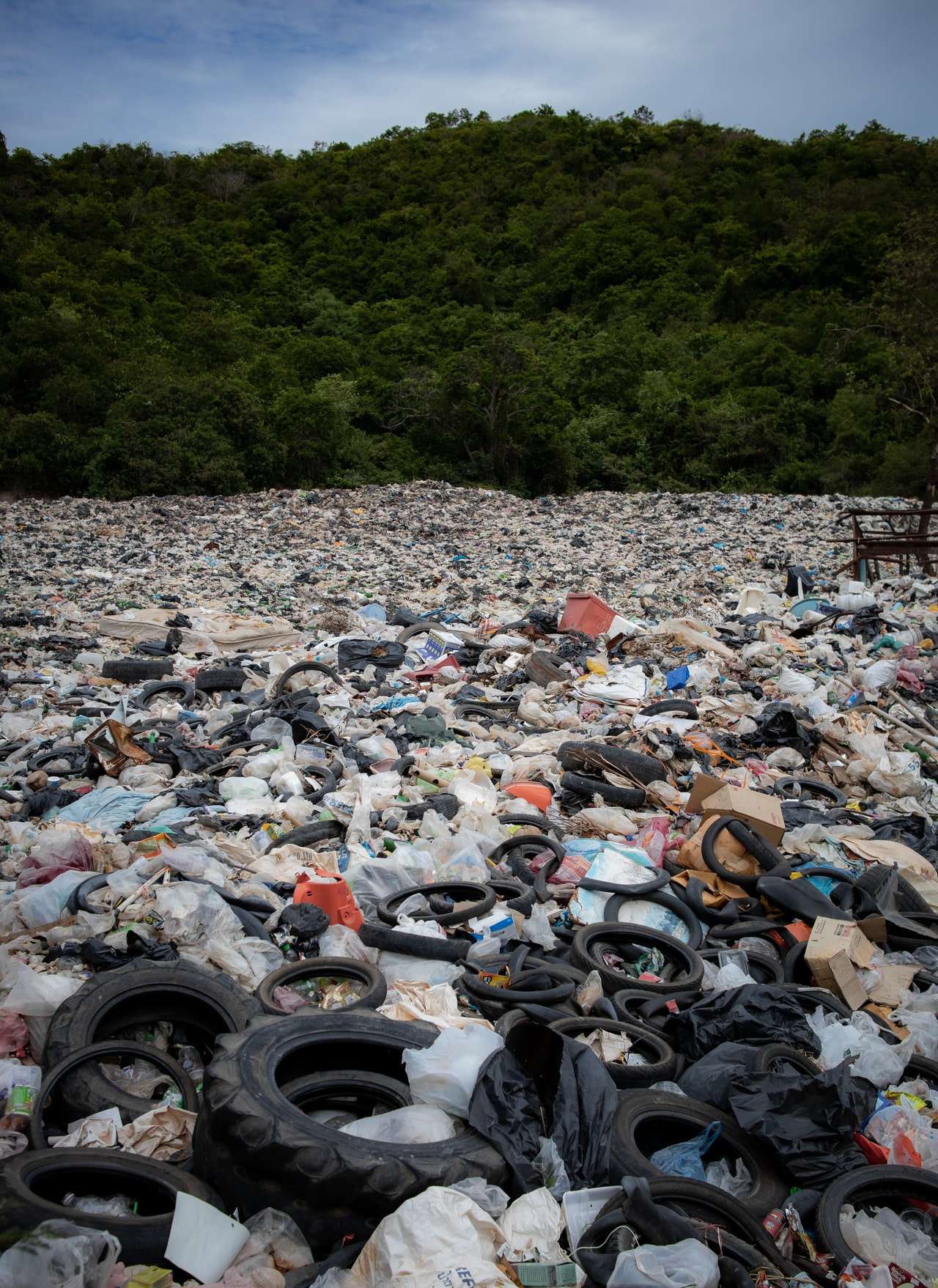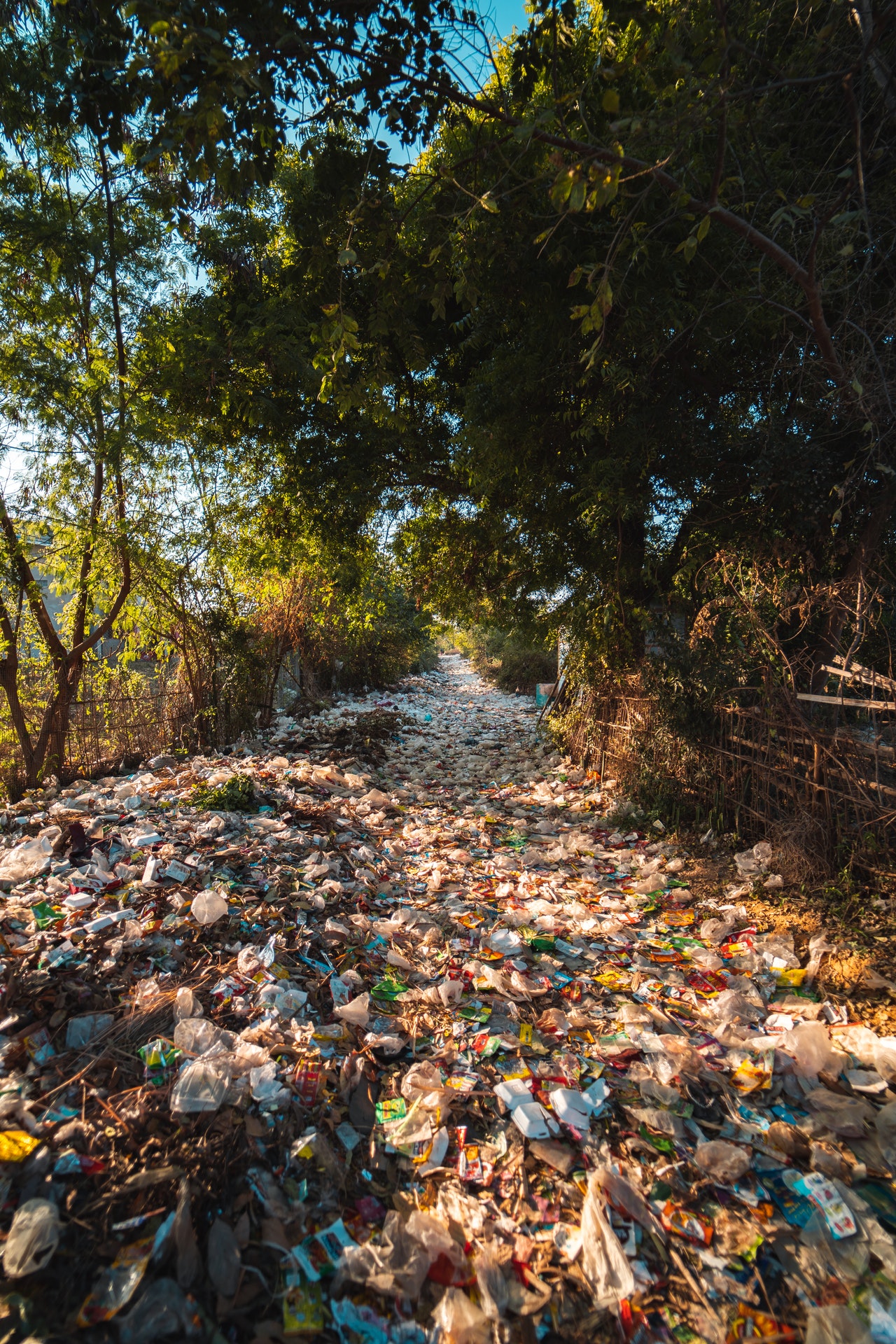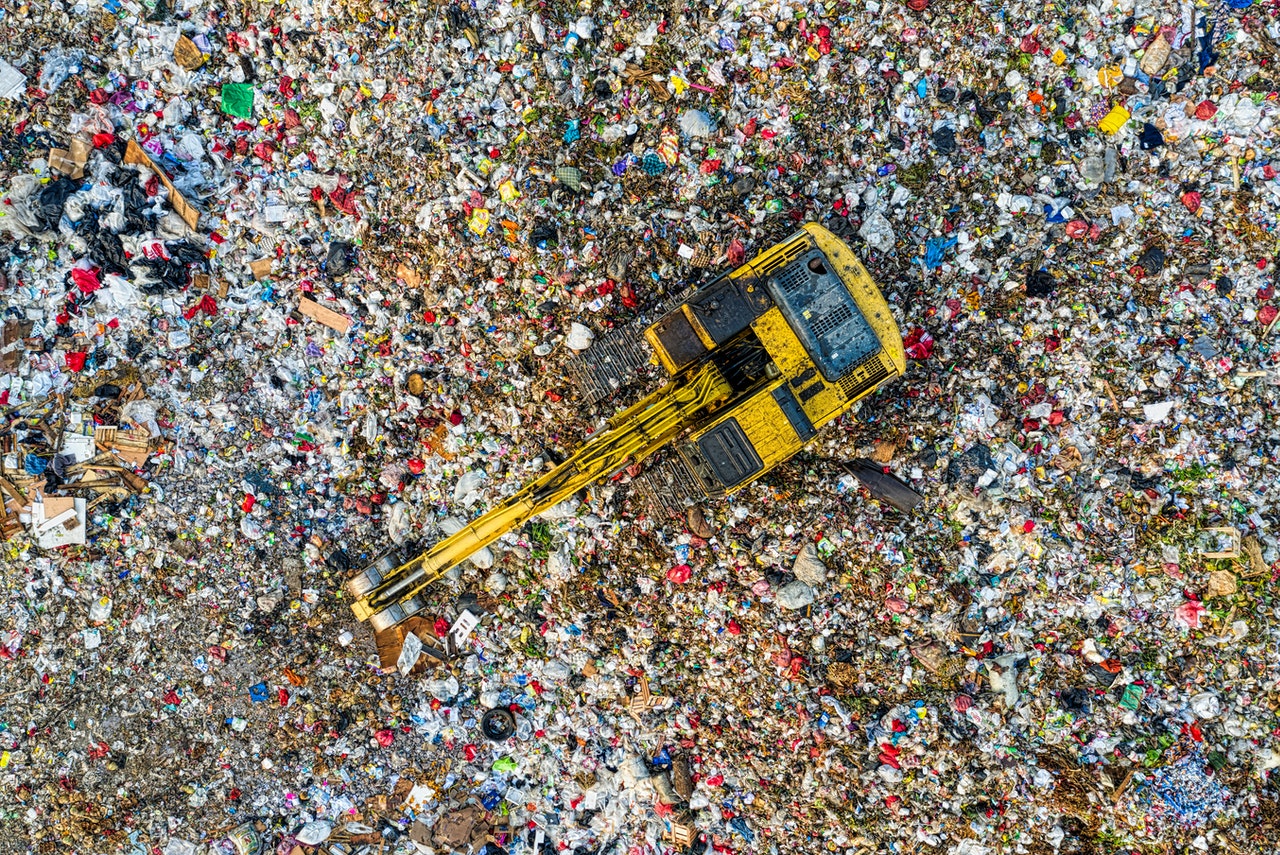If We Continue to Fill Landfills We Will Eventually Not Have Any Local Trash True or False
Pros and cons of landfills
A landfill is a piece of land where garbage is dumped. Previously they used to be called "the garbage area." Though they still play quite the same role, modern landfills are set and maintained on a regulation rule and standards by the employees from waste management and other environmentalists. The chemistry behind the structure is an extensive plain piece of land dug in three layers. The bottom layer is a durable and synthetic material, which is plastic and puncture-resistant called High-density propylene ( HDPE) and usually ranges up to 100 meters in thickness. A pipe is then put from the bottom of the landfill to drain out any liquids. Another extra pipe is inserted on top around the middle area of the garbage and emits the air to be reused more purposefully. The essence of the conservation theme behind the landfill is to produce useful air from the waste to help in other sectors.
This, however, has its advantages and disadvantages. Below are the in-depth broken down theory of reasons why they are useful and still a bit harmful.
Pros of Landfills
There is more attention to the waste around humans. These landfills have been curved, and proposals were brought to the table to maximize landfills fully. This will help to produce a better way for the environment, nature, and people around. The advantages that are experienced include;
1. Landfills are an Excellent Source of Energy
When the garbage accumulates, a series of gases are produced and taken out by a pipe to the environment. These gases mixtures of Carbon(IV)Oxide and Methane are mixed up and filtered out and can be useful somewhere else. The decomposing matters beneath, therefore, play a significant role in industries. In fact, at an estimation, it is said that landfills are the third source of emissions of Methane in the United States that is from the human effort. According to the Municipal Solid Waste (MSW), an approximation of 95.6 million of this Carbon(IV)oxide in ton measurement is produced from these landfills. This is a significant advantage, and with the increased number of space for these landfills, the realization of a rise in gas productions. The methane produced can be collected and used as a reasonably clean energy source. When this is not being used or captured, the production of methane becomes a con.
2. Landfills are No Longer Hazardous to the Atmosphere
Unlike the past, where there was a lot of debate and alarm on the environmental attack from hazardous gas and the Ozone layer damages and prediction from gases emitted from our efforts, the canceling of landfills is now more of a harm to the atmosphere. Thanks to environmental experts, conservationists, and different able minds that can put the technology to the test and work on the idea of what now goes on at the landfills. These areas are now being observed strictly by the government to ensure what has to go on in the dumps goes on flawlessly. These are through their policies, regulations, agreements, and requirements. Companies that conserve this area follow these clear rules and mandates to maintain the landfills to the best- and retain the hazardous air from going direct to the atmosphere and bring back the acid rains—something to be thankful for no longer being experienced.
3. Landfills are Increasingly Available
At the beginning of the landfill conservation, there was a fear that soon, these pits will run out due to people buying land, and there will be nowhere to dump the garbage. A concern was that litters would be everywhere, and the landfills will eventually run out, and the world will be a dirty, unclean place. However, this has happened quite the opposite. Many government firms have set aside free land to dump garbage, and many people have given up lands to dump garbages at a few tokens from the government or just for personal hygiene. There is more than enough land for the garbages, and they will not run out soon. This is sure an added advantage for more gas conservation while still keeping in place the garbages with the right proper care.
4. Landfills prevent water pollution.
Another chemistry activity that landfills do is separate garbages from the water tunnels that could cause blockages around. The three layers from the garbage, starting from the bottom layered plastic HDPE, holds the garbage correctly and making sure they remain at the bottom and water is filtered out correctly. If this could not be effective, then massive pollution of water, pipe breakages, and waste dumping could have affected the mass. People and marine animals could have been affected. Water is life, and landfills blocking water pollution is saving lives, even at the waste-point of such a natural aspect. Just amazing.
5. Landfills are super affordable
Think of this- if litters and plastic bottles were thrown everywhere, more left-out burnt plastic and hazardous gas would have been released into the environment. This could cause emissions of dangerous gasses to the Ozone layer, and there would be dirt everywhere. However, all that is needed is just that we dump the trash in the holes and fill it up. It does not require any money to do that, and the problems that we are preventing, however, could have caused lots of cash ( plastic materials can cause cancer). Even though the regulations and strictness of it have to be adhered to by skilled personnel, the playing team gets their share from the government and parastatals. However, to the ordinary citizen, dumping costs nothing, and all you have to do is walk to these sites, dump your garbage and save the world.
6. Landfills have created employment
The heroes behind the wheels picking up trash from our doors, cleaning them from our compounds, and conserving our landfills have a great opportunity to create income as they shape the environment. Previously when they were not catered for, none of these environmentalists hold these positions. For the workers involved in the conversation, food can be provided due to conserving these landfills. Many youths and organizations have also reformed and helping society work through a clean environment by engaging in the roles leading to the landfills.
7. It is an excellent manner of recycling wastes
Landfills make great use of wastes and recycle the already used stuff that we thought previously don't have any purpose. Industrial use of Methane and Carbon(IV)oxide is wide, the latter being used to make soft drinks. However, these wastes would be piled up everywhere and litter, contaminate and pollute our environment, and the world would have been so much unhealthier. Landfills came in to put the garbage in place and still are useful in bettering our lives in the future.
Cons of Landfills
Despite the advantages of landfills, there is still a bitter truth about landfills. Some of these disadvantages include;
1. They are Loaded with Wastes
Every little litter from town ends up in the landfills. The metal and devices are now dumped in the landfills. When these and everything else piles up, the landfills become full that some of them overfill, especially in crowded areas. Homeless dogs drag these wastes around, and bacterias are now close to home due to pilled up landfills. Too bad if the proper care is not taken. A look at the regions saddens and endangers lives, especially if there is an available nearby marine life-double trouble.
2. Not all gas gets emitted into the air
As mentioned, there is a pipe that emits re-useful gas. However, not all gas is fully sucked out of the pipe, and a great amount of it diffuses to the air and to the Ozone, which is, by the way, very dangerous. In return, it forms dark clouds, and acid rains come down, which is corrosive and bad to the health. The proof is the noticeable corrosiveness of iron sheets. Rainwater should be of the purest form of hard water due to its formation from the cloud, making it natural and first-hand. However, when landfills are involved in forming the rains, that is not the case. The gas liquefies itself and comes down and corrodes any metal in contact- to prove how hazardous the water is. The landfills promote this somehow when the air is not filtered out fully, and the only escape they find is the air above.
3. Rising of Leachate
Leachate is a soup mix of water and wastes. This mixture is so lethal, and when mixed with the other products found inside the wastes dropped at the garbage, it creates a pool of liquid at the bottom of the landfill. While the tank collects these liquids to the collective tank, the metal, in time, corrodes and leaks out. This is usually unable to be fixed, and the liquids will now lead the bottom of the landfill to break. This will pile up at a ground area and break out the nearby soil drainage to unknown lengths. This water might travel to a place nearby, burst another ground, and flow to rivers and tanks, pipes, and homes. There is no limit to the damage they can create.
4. Landfills affect Human Health
Plastic bags affect human lives, and in greater harm, they cause diseases. These are one of the toxic things found in these landfills. Unused electronic devices can cause accidents to children, and the sharp ones can prick children's legs and, if left unattended, can cause Tetanus. At such a careless point of living in the community, then landfills really can cause lots of harm and death in the long run, and when these litters pile up so much, they endanger human lives. When dogs and other animals move the dirt or dig down to search for food, your dog can bring home dirt when left unattended. If the kids also play with the plastics, toys, and whatever they fancy from the landfills, germs can cause diseases such as diarrhea. Proper sanitation is therefore needed, and antibacterial sanitization should be done from home to prevent this. This is in the presence and absence of a landfill near you because you never know where contamination could have been done.
5. Affects wildlife
While some animals like rats and mice might dig out to find food, others get affected by the smell of landfills. Some even lose their homes and die during the landfill's digging process or how the landfills affect them. Some landfills areas were also places where great rare plants or gardens of good flowers and vegetation were growing. When they are cut down, their habitat is destroyed to pave the way for the landfills. This activity displaces the whole ecosystem that was previously doing just fine.
6. Growing in Underground Water in areas Nearing the landfills
When left unattended, the Leachate can be too much, and more water can be realized underground. If the Leachate is not collected, the soil underground can break out, and in turn, more and more water will travel underground what follows polluted water around the areas where the landfill is available. Wonder how sometimes the people residing around the landfills complain of smell from their water? Because of the landfill leaks, the water gets into the household and is being drunk by the household members. Tragic.
7. The products are better recycled
While the notion of the landfill is still a true and good environmental conservation way, some of the materials in the landfills are surely and best recycled, an example of plastic, electrical devices, and plastic bags. All they do is fill up the landfills and provide a foul smell, and they won't ever decompose at all. It is better left to say that the materials can be dumped and replaced better. The metals will only lead to more Leachate where they'd rather be taken out and be used for other purposes.
8. More Underground water might emerge
Due to the leaking leachates, more underground water might leak at the bottom of the landfill. This might not only lead to more breakouts from the pipes from previous plumbings but might also lead to soil erosions, especially in areas on soils with poor drainage. It might affect the purpose of the soil on whether agriculturally purposed and lands will be destroyed.
9. Landfills are so expensive to build
While maintaining the landfill and building it up is somehow easier and cheap to maintain, the overall onset and building of the landfill are rather quite expensive. The infrastructure behind the landfill building and operations requires a set of machines and skilled individuals to work around. The machines used to dig and maintain the landfill are usually super high energy and costs a ransom. The best maintenance to curb the waste and smell requires investment from only the best-trained personnel machines; thus, it could be a lot to put together.
10. Unrecyclable wastes
The essence of landfills is recycling the garbages to produce useful gas to be renewed in the companies and help back in the overall human useful products. Materials such as plastics, metals, and papers are not organic and will not be decomposed if introduced into the landfill. Some of the wastes dumped are just not supposed to be in the landfill, a case of electronic devices besides. This leads to much gas collected from the dumps and only piles up the already toxic leachates. Therefore a quick need for separations by those working around the area must attest to the best of the results needed from the landfills.
11. Destruction of Marine Plants near the Ocean
When a landfill is closer to the ocean and wastes get dumped near the banks, it can cause the death of some of the plants inside the oceans. A lot of marine life does depend on the plants under the water to survive, especially the deep, enormous algae growing from the stems of these plants. Therefore, the marine source of food is limited when some of these toxic wastes and Leachate pollute their niche. Plus plastic bags are hazardous to the fish, and while it will think that that's a place to hunt it's good, it will be suffocated and when more other animal surround the dead fish, might also get caught up on the plastic. Leading international teams have raised a flag over this affected ecosystem, garbage from the near landfills being the core of the problem to the death of these species over the years.
It is vital to note that landfills definitely have lots of advantages as it is necessary to note that they also bring a negative effect. While the latter is hazardous, many implementations can be brought to prevent every single vice that comes with it. Choosing a correct niche for landfills, being aware of animals living under the ground, and knowing ways to introduce newer pipes at the bottom of the landfills will work fine. Making sure the landfills are dug not closer to homes can also prevent effects in the cause of burst out pipes. We should adopt proper care of the landfills more through these measures to ensure that we also conserve the environment just more. We will save more lives, be healthier, conserve vegetation, and trees growing around will be preserved instead of cutting them to make the land for the landfills.
Source: https://www.ablison.com/pros-and-cons-of-landfills/
0 Response to "If We Continue to Fill Landfills We Will Eventually Not Have Any Local Trash True or False"
Post a Comment